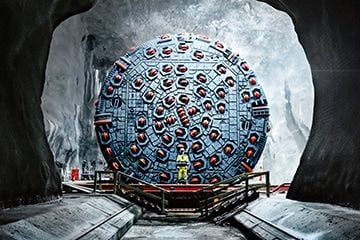
The Follo Line project in Oslo is a technology revolution for tunnel-rich Norway. Previously, tunnels over there have usually been driven with explosives. But for the largest infrastructure project in the land of the fjords, tunnel boring machines are now being used. Since late 2016, four Double Shields from Herrenknecht have been simultaneously drilling through the tough hard rock. A first worldwide and a logistical challenge: in the extremely hard gneiss, the disc cutters wear out faster, requiring up to 4,250 cutter changes per machine in the course of the project. The worn out disc cutters are taken to Schwanau, 1,500 kilometers away, where they are completely refurbished for reuse.

